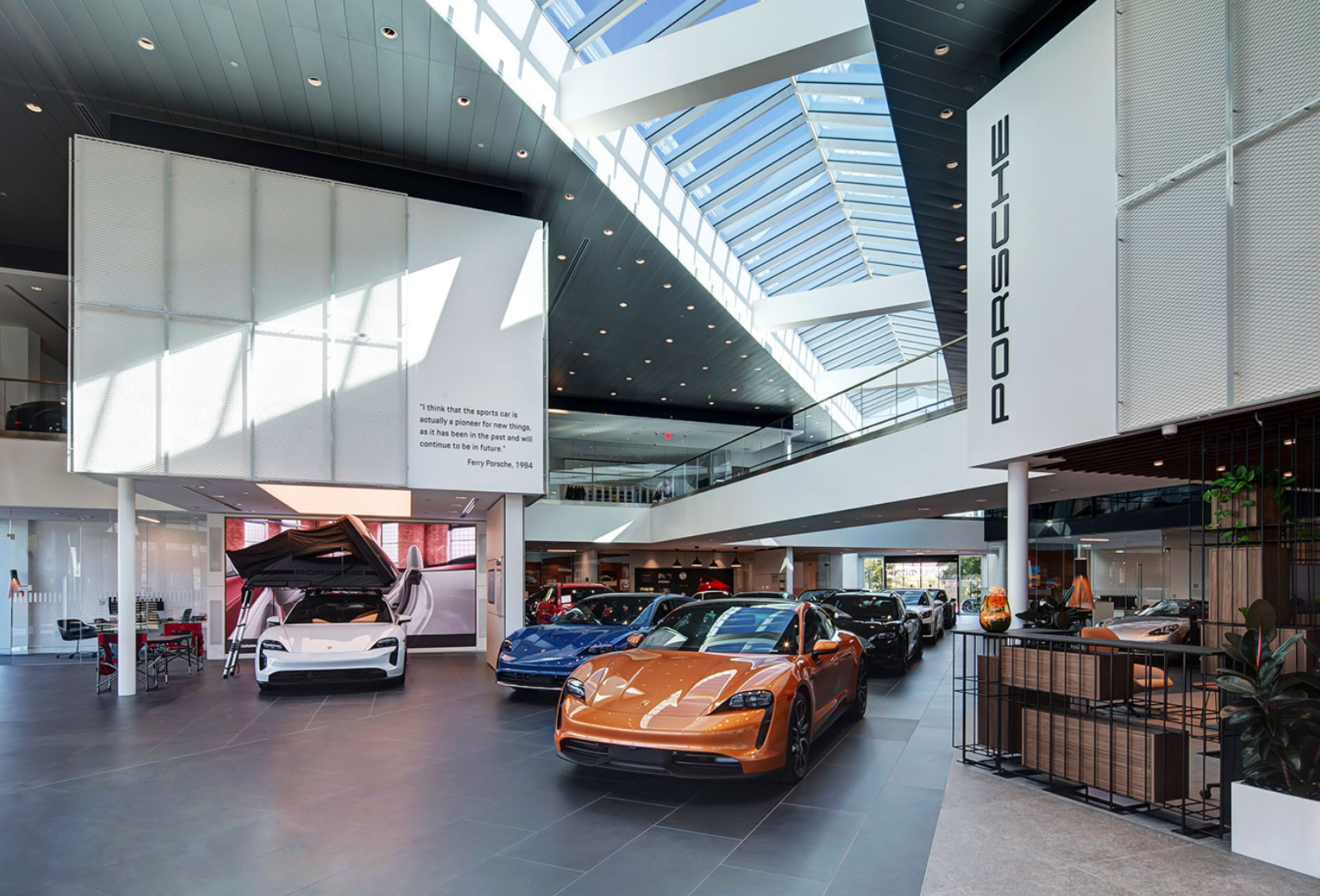How I Got the Job at Porsche

Before Porsche, I was working for my dad’s commercial millwork company as his personal assistant. Totally different industry, but it taught me how to stay organized and work under pressure—skills that ended up helping me later.
The opportunity at Porsche kind of fell into my lap. My dad and I were in the store one day, and the saleswoman we always saw pulled me aside. She said I’d be a great fit and told me to send her my resume if I was interested. A few weeks later, I applied for a sales porter position.
The interview process took over a month and was surprisingly thorough. First, I met with two sales managers. They asked basic stuff—can I drive stick (yes), any accidents or tickets (clean record), and about my background as a full-time cybersecurity student. They also wanted to know how far I lived and what my general availability was.
Next up was an interview with the general manager. This one went deeper. He explained the role in detail, and we worked out a schedule that would let me juggle both school and work. He made it clear they weren’t just hiring a warm body—they wanted someone in it for the long haul.
Then came the background checks, a drug test at a lab, and finally a virtual interview with a rep from Penske Automotive (they own the dealership). She asked similar questions to the first round, and everything checked out.
A Day in the Life at Porsche

My official title was sales porter, but that barely scratches the surface. My main job was to prep sold cars before delivery. That meant giving each car a full, detailed wash inside and out—no shortcuts. I’d remove all dealer stickers (zero residue), install the floor mats, clean the wheels, tire shine, fill the tank, and then pull it into the delivery room for a final inspection. I was obsessive—no dust in the door jambs, no fingerprints on screens or trim. Every car had to look perfect.
Outside of that, I managed the sales lot. That meant keeping every car aligned by model, size, and whether it was new or used. Sounds simple—until you have to move 5-10 cars just to slot one in the right place. Not my favorite part.
I also handled a lot of random but important “side quests,” like:
- Driving cars off-site for service (once got to take a GT4!)
- Picking up clients or their cars if they couldn’t make it in
- Charging electric vehicles
- Taking listing photos when needed
- Grabbing spare keys for the sales team
- Covering the front desk, answering phones
- Organizing the showroom
When new cars came in off the truck, I’d document everything—take photos, drive them into the garage, sign the BOL, and send it to management. I even handled paperwork and documentation when we shipped cars out.
My hours were typically 12–8 on weekdays and 9–6 on Saturdays. The best part? Driving the cars—especially when I got to take them out on the road. I call those little missions “side quests.” Worst part? Reorganizing the lot—sometimes it felt like a puzzle with 100 pieces and one open space.
What really surprised me was the precision. Every single car is cleaned and prepped to showroom quality, every time. The shop itself is spotless—actually beautiful—and the whole team runs like a machine. Super efficient, but also fun to work with. Nobody had an ego. Nobody gave me attitude.
Cars I Got to Drive at Porsche (And What Surprised Me)

Let’s be honest—this was the dream part of the job. I got to drive and prep some seriously legendary machines, and a few really surprised me along the way.
Best of the Best
- 911 GT3 RS – This thing is unreal. It feels glued to the road—so dialed in it almost makes other sports cars feel sloppy. The design, the sound, the feedback… next level.
- Taycan Turbo S – This was my first real “wow” moment in an EV. It’s scary quick—quiet but brutally fast. Zero drama, just instant speed.
- Panamera – Totally underrated. It’s the least hyped model in the lineup, but honestly one of my favorites. It’s roomy, refined, quick, and feels way more agile than it should. Great daily driver if you want Porsche feel with real practicality.
- Cayenne (All Trims) – I’ve driven every trim—from base to Turbo GT—and I’m genuinely impressed. Think of it as a bigger Panamera SUV: quiet, smooth, fast, and surprisingly fun to drive. Styling is clean and it never feels clunky.
Underwhelming Picks
- 718 & 718 S (Base) – These were kind of a letdown. They look great and handle well, but for the price, they didn’t give me that true “Porsche performance” feeling. Fine cars—but not what I’d pick for the money.
Inside Porsche Culture (And What It Taught Me About Cars)
The vibe at Porsche is a rare mix—it’s fun, focused, and chill all at the same time. There’s no “hurry up” stress or dealership panic. Everyone knows their role and does it well. It never felt like a pressure cooker, even during busy weekends.
What really separates Porsche from other brands is the obsession with presentation and experience. It’s not just about showing people cool cars—it’s about delivering the Porsche brand in every detail. From how the cars are displayed to how customers are treated, everything is intentional.
Working here absolutely changed the way I look at cars—especially Porsches. Options are everything in this world. Two Cayennes or two 911s might look the same from the outside, but drive and feel completely different based on how they’re specced. That was a big eye-opener. Value can swing massively depending on how the car is built. It’s made me way more tuned in to the little details that most people miss.

